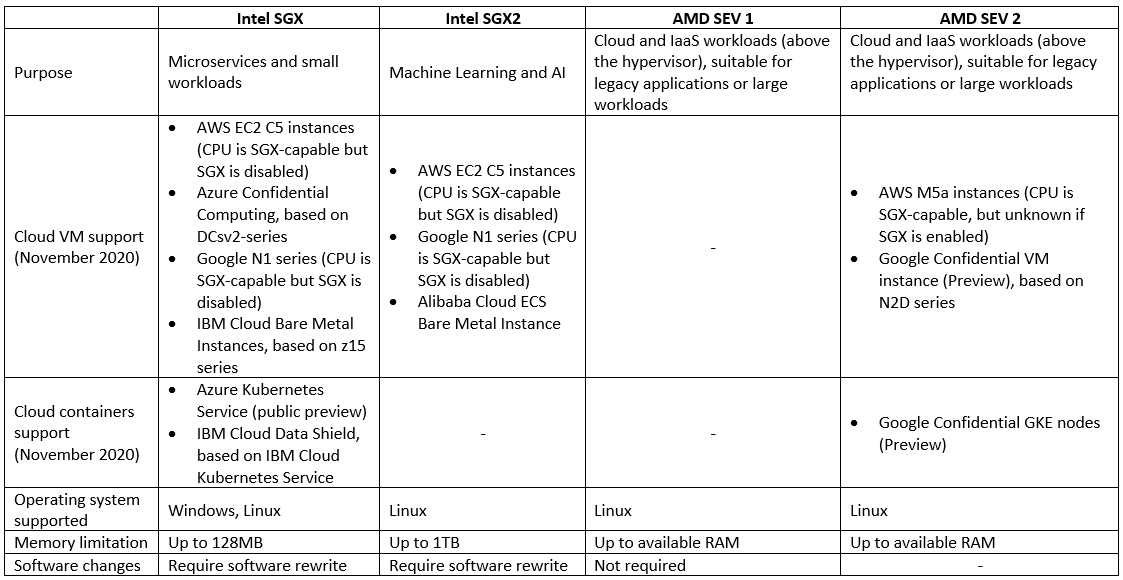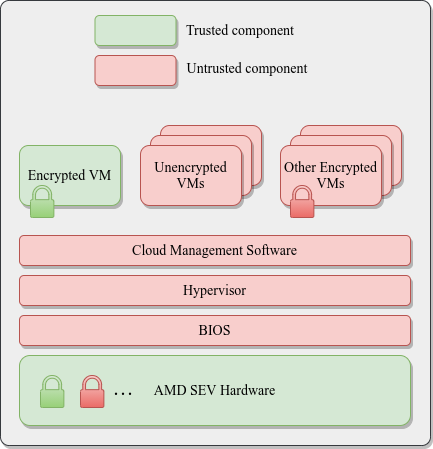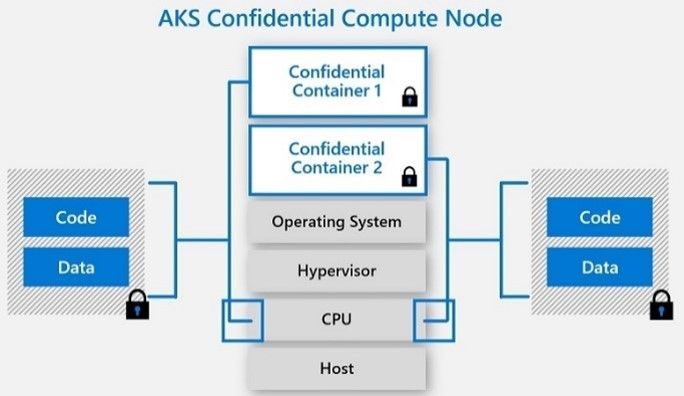What exactly is “confidential computing” and what are the reasons and benefits for using it in the public cloud environment?
Introduction to data encryption
To protect data stored in the cloud, we usually use one of the following methods:
Encryption at transit
Data transferred over the public Internet can be encrypted using the TLS protocol. This method prohibits unwanted participants from entering the conversation.
Encryption at rest
Data stored at rest, such as databases, object storage, etc., can be encrypted using symmetric encryption which means using the same encryption key to encrypt and decrypt the data. This commonly uses the AES256 algorithm.
When we wish to access encrypted data, we need to decrypt the data in the computer’s memory to access, read and update the data. This is where confidential computing comes in – trying to protect the gap between data at rest and data at transit. Confidential Computing uses hardware to isolate data. Data is encrypted in use by running it in a trusted execution environment (TEE).
As of November 2020, confidential computing is supported by Intel Software Guard Extensions (SGX) and AMD Secure Encrypted Virtualization (SEV), based on AMD EPYC processors.
Comparison of the available options
Reference Architecture
AMD SEV Architecture:
Azure Kubernetes Service (AKS) Confidential Computing:
Data-in-use protection on IBM Cloud using Intel SGX:
References
Confidential Computing: Hardware-Based Trusted Execution for Applications and Data
https://confidentialcomputing.io/wp-content/uploads/sites/85/2020/10/ConfidentialComputing_Outreach_Whitepaper-8-5×11-1.pdf
Google Cloud Confidential VMs vs Azure Confidential Computing
https://msandbu.org/google-cloud-confidential-vms-vs-azure-confidential-computing/
A Comparison Study of Intel SGX and AMD Memory Encryption Technology
https://caslab.csl.yale.edu/workshops/hasp2018/HASP18_a9-mofrad_slides.pdf
SGX-hardware list
https://github.com/ayeks/SGX-hardware
Performance Analysis of Scientific Computing Workloads on Trusted Execution Environments
https://arxiv.org/pdf/2010.13216.pdf
Helping Secure the Cloud with AMD EPYC Secure Encrypted Virtualization
https://developer.amd.com/wp-content/resources/HelpingSecuretheCloudwithAMDEPYCSEV.pdf
Azure confidential computing
https://azure.microsoft.com/en-us/solutions/confidential-compute/
Azure and Intel commit to delivering next generation confidential computing
https://azure.microsoft.com/en-us/blog/azure-and-intel-commit-to-delivering-next-generation-confidential-computing/
DCsv2-series VM now generally available from Azure confidential computing
https://azure.microsoft.com/en-us/blog/dcsv2series-vm-now-generally-available-from-azure-confidential-computing/
Confidential computing nodes on Azure Kubernetes Service (public preview)
https://docs.microsoft.com/en-us/azure/confidential-computing/confidential-nodes-aks-overview
Expanding Google Cloud’s Confidential Computing portfolio
https://cloud.google.com/blog/products/identity-security/expanding-google-clouds-confidential-computing-portfolio
A deeper dive into Confidential GKE Nodes—now available in preview
https://cloud.google.com/blog/products/identity-security/confidential-gke-nodes-now-available
Using HashiCorp Vault with Google Confidential Computing
https://www.hashicorp.com/blog/using-hashicorp-vault-with-google-confidential-computing
Confidential Computing is cool!
https://medium.com/google-cloud/confidential-computing-is-cool-1d715cf47683
Data-in-use protection on IBM Cloud using Intel SGX
https://www.ibm.com/cloud/blog/data-use-protection-ibm-cloud-using-intel-sgx
Why IBM believes Confidential Computing is the future of cloud security
https://venturebeat.com/2020/10/16/why-ibm-believes-confidential-computing-is-the-future-of-cloud-security/
Alibaba Cloud Released Industry’s First Trusted and Virtualized Instance with Support for SGX 2.0 and TPM
https://www.alibabacloud.com/blog/alibaba-cloud-released-industrys-first-trusted-and-virtualized-instance-with-support-for-sgx-2-0-and-tpm_596821



